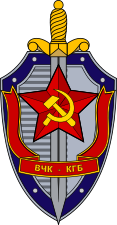
The red in the Soviet flag is supposed to symbolize the blood spilled by the peasants and workers in the 1917 revolution. Ironically, these same people continued to spill their blood through out the entire lifetime of the USSR through various purges, wars, and famines. The first of these numerous purges (and there will be more) was the Great Terror. This was a purge headed by the People’s Commissar of Internal Affairs, Nikolai Ezhov until, again with the irony, he himself was killed in the purge, much like Robespierre in his purges.
This was a purge of the Communist Party, making it more loyal to Stalin. Stalin needed to consolidate power under himself after the death of Lenin. The purge decimated the upper echelons of the Red Army. It killed three out of the five marshals, all the first-rank army commanders, all the second-rank army commanders, 70% of the divisional and regimental commanders, and 60% of the political commissars. This absolutely destroys an army’s ability to operate at any strategic level. These generals were the ones that held the strategic plans for the Red Army; where to attack, where to defend, logistics, all the things necessary to win wars. Without them, the Red Army is severely handicapped when it comes time for war, as we see in World War II.
But wait, there’s more! Not only was the Red Army neutered, but the government and the people were repressed too. Nobody is safe! One of the more notable people to be gobbled up by the purge is our friend Leon Trotsky who met a grisly end at the end of an ice ax. All in all the Great Terror killed approximately between one and three million people and scattered another nine million throughout Gulags in the Siberian Steppe. The Great Terror was not a bad time for everyone, however. Great people* like Lavrentiy Beria and Vasily Blokhin rose to new heights in the NKVD.
*not actually great people but rather rapists and mass murderers respectivly
Sources:
– http://soviethistory.msu.edu/1936-2/the-great-terror/
– http://soviethistory.msu.edu/1936-2/the-great-terror/the-great-terror-images/#bwg86/1427
– in classnotes

I really liked your post! I think it’s important to recognize not just the raw cruelty of the purges, but also how they affected the army and the government in general. Removing the majority of the people in the government or army ranks also removes a lot of the experience, which as you mentioned becomes quite evident later on.
LikeLike
I really liked the image you used in your post. The swastika eyes of the strangled snake played a large role in Soviet politics, as it also showed its relationship with Germany. I found it interesting that Stalin basically handicapped his own nation’s ability to do well in World War II especially since the Soviet people knew that a war was coming, but not when or where.
LikeLike
Great post, I like how your post was full of facts and held my interest . The “but wait there’s more” was a great touch. Also, have you read https://taylorraeboydblog.wordpress.com/2018/03/19/kirov-and-killing/ (Taylor’s) you guys wrote about similar things.
LikeLiked by 1 person
Interesting post, your hundred percent correct, when you mentioned how it would hurt them in WW2. At the start of WW2, the German army was just able to steamroll the Soviet forces because they had incompetent officers, that had replaced all those who had been purged. Those officers that had been accused, at been in the army and had a lot of experience were as the replacements had little to no experience, it wasn’t until late in the war a new generation of officers emerged, did the Soviets have active military leadership.
LikeLike